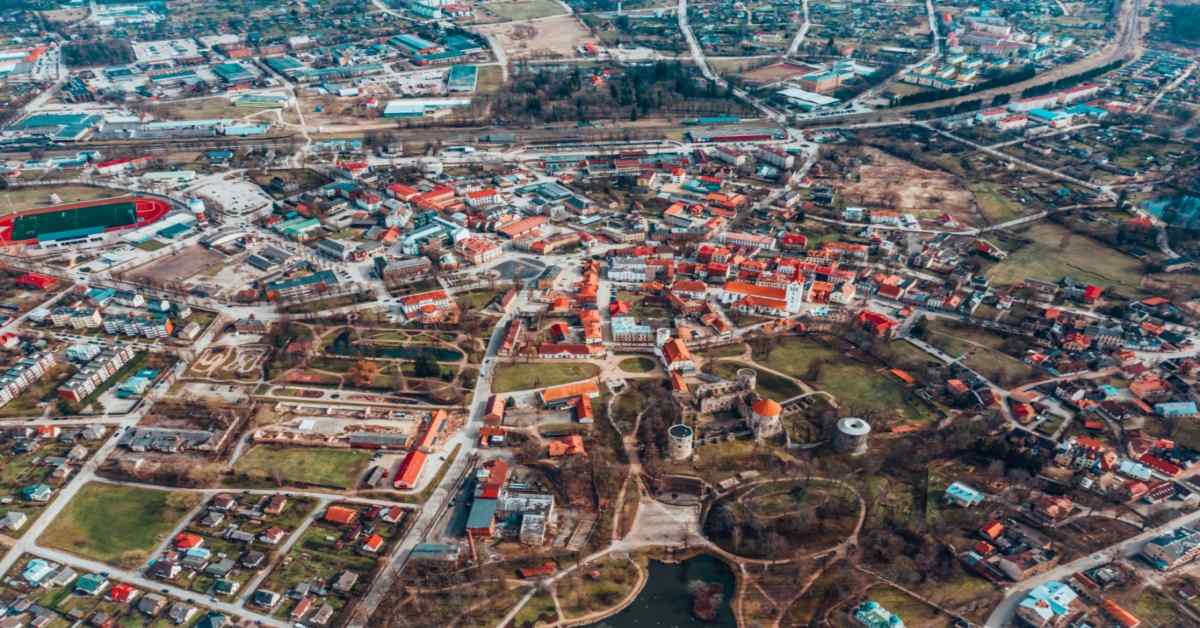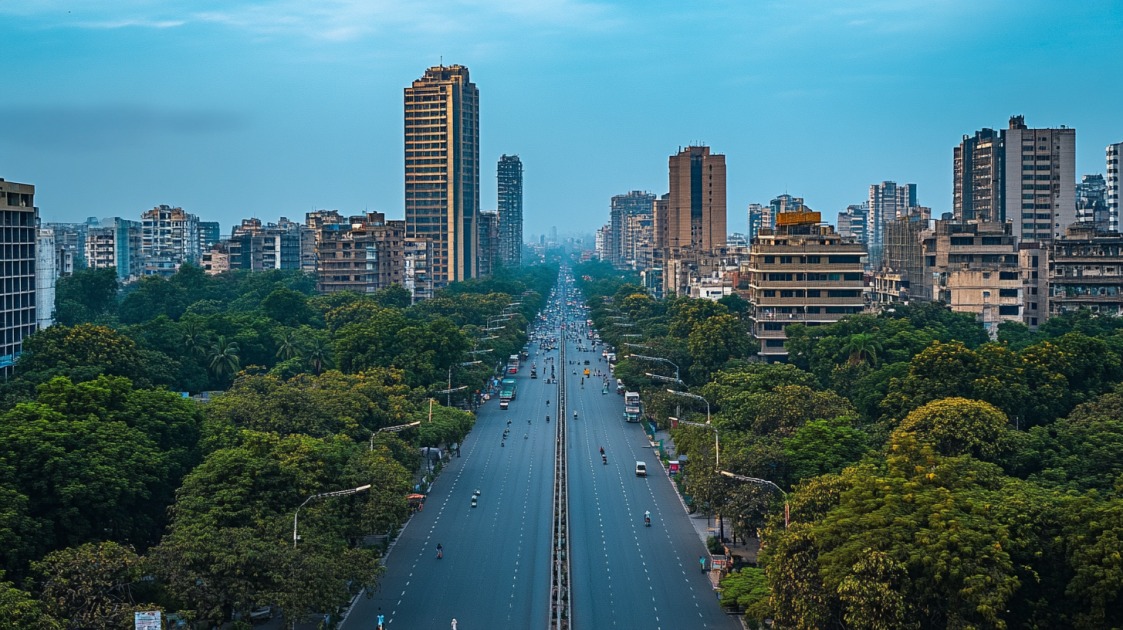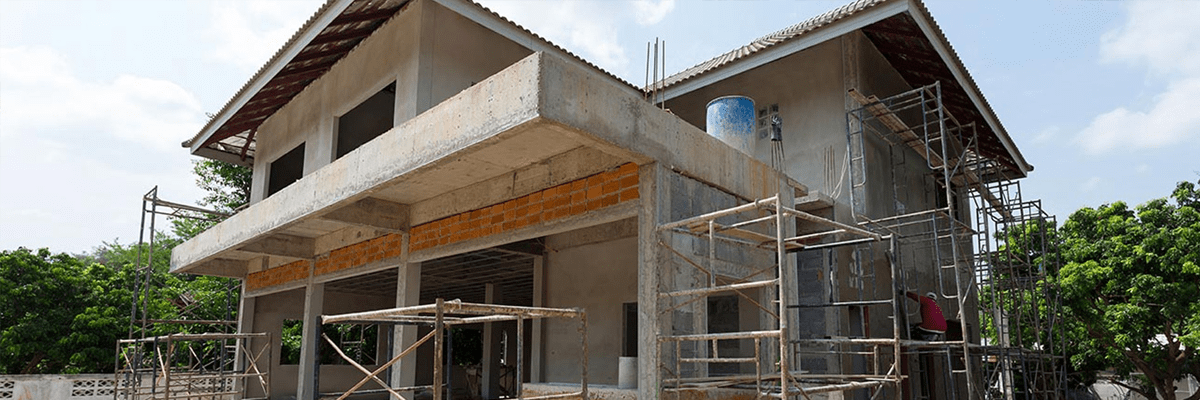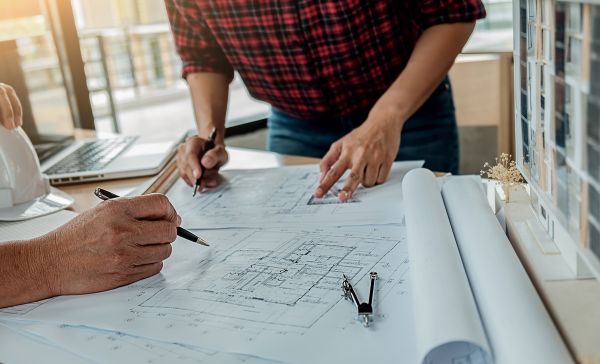Table of Contents
Quality Service Guarantee Or Painting Free

Get a rental agreement with doorstep delivery

Find the BEST deals and get unbelievable DISCOUNTS directly from builders!

5-Star rated painters, premium paints and services at the BEST PRICES!
Loved what you read? Share it with others!


Submit the Form to Unlock the Best Deals Today
Help us assist you better
Check Your Eligibility Instantly

Experience The NoBrokerHood Difference!
Set up a demo for the entire community
Guide to Different Types of Indian Houses 2024
Table of Contents
Types of houses in India represent not just shelter but a profound reflection of the country's rich cultural heritage, diverse geography, and historical influences. From the rustic simplicity of vernacular dwellings to the grandeur of colonial-era mansions and the sleek modernity of urban high-rises, Indian architecture offers a fascinating glimpse into the evolution of society and lifestyle across the centuries.
In this blog, we'll take a look at the different kinds of houses you can find across India. We'll explore how they're built, what they look like, and why they're important. Join us as we journey through the towns and villages of India, discovering the homes that make each place unique.
1. A Look at Traditional Indian Houses

Traditional Indian houses are a testament to the ingenuity of ancient builders who crafted dwellings perfectly suited to their local environments and cultural practices. These houses, steeped in history and tradition, continue to be cherished symbols of heritage and identity across the country.
Quality Service Guarantee Or Painting Free

Get a rental agreement with doorstep delivery

Find the BEST deals and get unbelievable DISCOUNTS directly from builders!

5-Star rated painters, premium paints and services at the BEST PRICES!
2. Vernacular Architecture From the West of India

Vernacular architecture forms the backbone of traditional Indian housing, shaped by the climate, geography, and available resources of each region. From the arid deserts of Rajasthan to the lush forests of Kerala, vernacular houses exhibit remarkable diversity while sharing common principles of sustainability and practicality.
Importance of Climate and Geography
- Adaptation to hot and humid climates in the south with open courtyards and sloping roofs.
- Utilisation of locally available materials such as mud, bamboo, thatch, and stone.
Examples
- Thatched roof huts in rural villages, providing natural insulation against heat and rain.
- Mud houses with thick walls in regions like Gujarat and Madhya Pradesh, offering cool interiors during scorching summers.
- Different types of houses in Maharashtra exhibit characteristics of vernacular houses.
3. North Indian Houses

The architectural styles of North India bear influences from various historical periods, including Mughal, Rajput, and Sikh architecture. These houses often feature elaborate facades, spacious courtyards, and intricate detailing, reflecting the opulence of bygone eras.
Influence of Mughal Architecture
- The grandeur of Mughal-inspired havelis adorned with intricate jali work and ornate balconies.
- Emphasis on symmetry and proportion, with central courtyards providing natural ventilation and light.
Courtyard Houses: Havelis and Mahals
- Havelis, traditional mansions of wealthy merchants and nobles, characterised by inner courtyards and intricate frescoes.
- Mahals, fortified palaces of Rajput rulers, featuring imposing facades and elaborate defensive structures.
4. South Indian Houses

In contrast to the grandeur of North Indian architecture, the houses of South India exude simplicity and elegance, with a focus on harmony with nature and practicality of design. Dravidian architectural elements dominate, creating homes that are both functional and aesthetically pleasing.
Dravidian Architecture
- Emphasis on temple-like structures with pyramidical roofs and sculpted pillars.
- Courtyard layouts with interconnected living spaces and verandas to promote cross-ventilation.
Elements
- Courtyards serve as central gathering spaces for family rituals and social gatherings.
- Sloping roofs with clay tiles or thatch provide protection from heavy monsoon rains.
5. East Indian Houses

The eastern states of India boast a unique architectural heritage shaped by their distinct cultural identities and natural landscapes. From the terracotta temples of Bengal to the bamboo houses of Assam, the houses of East India showcase a remarkable blend of tradition and innovation.
Bengal's Terracotta Houses
- Intricately carved terracotta facades depicting mythological motifs and religious themes.
- Thatched roofs and wooden beams creating a rustic charm in rural Bengal villages.
Assam's Bamboo Houses
- Sustainable dwellings constructed primarily from bamboo and thatch.
- Raised platforms to protect against floods and dampness, with woven bamboo walls providing natural ventilation.
6. Colonial Influence on Indian Houses

The colonial period in India, spanning several centuries, left an indelible mark on the country's architectural landscape. The British, Portuguese, and French colonial powers introduced new building styles, materials, and techniques that blended with indigenous traditions to create a unique fusion of East and West.
7. British Colonial Architecture

British colonial rule in India saw the emergence of distinct architectural styles, particularly in urban centres and hill stations. These structures, designed to accommodate colonial administrators and military personnel, continue to be iconic symbols of India's colonial past. Many types of houses in rural areas in India are still inspired by the colonial style of architecture.
Bungalows and Cottages
- Spacious single-storey residences with verandas and large gardens, inspired by rural English homes.
- Use of local materials such as brick, stone, and teak wood, combined with British design principles.
Influence on Hill Stations and Cantonments
- Development of hill stations like Shimla, Darjeeling, and Ooty as retreats for British officials seeking respite from the sweltering heat of the plains.
- Cantonments, military garrisons established by the British, featuring orderly layouts and European-style barracks.
8. Portuguese Influence

The Portuguese presence in India, particularly in regions like Goa and Daman and Diu, left an enduring legacy in the form of Indo-Portuguese architecture. Characterised by vibrant colours, intricate tile work, and a fusion of European and Indian elements, these houses are a testament to Goa's multicultural heritage.
Indo-Portuguese Homes in Goa
- Portuguese-style villas with tiled roofs, arched doorways, and decorative azulejo tiles.
- Inner courtyards and shaded verandas creating comfortable living spaces in Goa's tropical climate.
Features
- Vibrant colours such as yellow, blue, and red, reflecting the influence of Portuguese aesthetics.
- Wooden balconies and jalousie windows adding to the charm of colonial-era homes.
9. French Influence

Pondicherry, formerly a French colony, showcases a distinct blend of French and Indian architectural styles in its historic quarters. The French Quarter, with its quaint streets lined with colourful buildings, evokes a sense of nostalgia and romance reminiscent of old-world Europe.
Pondicherry's French Quarter
- Rows of pastel-coloured houses with colonial facades and wrought-iron balconies.
- Narrow streets and boulevards reminiscent of French towns, interspersed with traditional Tamil homes.
Architecture
- Colonial mansions featuring high ceilings, shuttered windows, and verandas overlooking landscaped gardens.
- Influence of French town planning principles, with emphasis on symmetry and order.
10. Modern Indian Houses

The post-independence era in India witnessed significant transformations in architectural styles, driven by urbanisation, globalisation, and technological advancements. From the soaring skyscrapers of metropolitan cities to the eco-friendly villas of suburban areas, modern Indian houses reflect the aspirations and lifestyles of a rapidly evolving society.
11. Urban High-Rises

India's burgeoning urban population has led to the proliferation of high-rise residential complexes in major cities. These vertical communities offer a blend of luxury, convenience, and modern amenities, catering to the needs of urban dwellers seeking upscale living spaces.
Apartments and Condominiums
- Multi-storeyed apartment buildings with sleek, contemporary designs and state-of-the-art facilities.
- Gated communities featuring landscaped gardens, swimming pools, and recreational areas for residents.
Rise of Gated Communities:
- Growing demand for secure and well-planned residential enclaves, especially in rapidly urbanising areas.
- Integration of smart technology and sustainability features to enhance quality of life and reduce environmental impact.
12. Contemporary Villas

While high-rise living dominates the urban landscape, there is also a resurgence of interest in contemporary villas designed for modern living. These spacious, custom-built homes combine elements of traditional and modern architecture, offering a luxurious retreat amidst the hustle and bustle of city life.
Fusion of Traditional and Modern Elements
- Incorporation of traditional architectural motifs and materials into contemporary designs, creating a sense of continuity with the past.
- Emphasis on open floor plans, natural light, and seamless indoor-outdoor living spaces.
Sustainable Architecture Trends
- Growing awareness of environmental issues driving demand for eco-friendly housing solutions.
- Use of renewable materials, energy-efficient technologies, and passive design strategies to minimise carbon footprint.
13. Regional Variations in Contemporary Housing

While modern housing trends often dominate the narrative, it is essential to recognise the diverse regional variations that shape contemporary housing in India. From metropolitan cities to rural villages, each region exhibits unique socio-cultural dynamics and architectural preferences, resulting in a fascinating tapestry of residential landscapes.
14. Metropolitan Cities

India's metropolitan cities, including Mumbai, Delhi, Bangalore, and Chennai, are epicentres of rapid urbanisation and modernisation. Here, the demand for housing reflects the cosmopolitan nature of these urban hubs, with a focus on high-density living and vertical expansion.
Apartments and Skyscrapers
- Skyline dominated by towering skyscrapers and high-rise apartment complexes, catering to the burgeoning urban population.
- Vertical living solutions offering convenience, security, and access to amenities such as shopping malls, schools, and healthcare facilities.
Influence of Global Architectural Trends
- Adoption of international architectural styles and design trends, influenced by factors such as globalisation, tourism, and foreign investment.
- Incorporation of futuristic elements, innovative building materials, and smart home technologies to create urban landmarks.
15. Rural Areas

In contrast to the urban sprawl, rural India presents a starkly different picture of housing, characterised by traditional dwellings and agrarian lifestyles. Here, the dynamics of housing reflect the socio-economic realities of rural communities, as well as efforts to balance modernisation with preservation of cultural heritage.
Modernisation vs. Preservation of Traditional Styles
- Tensions between the desire for modern amenities and the preservation of vernacular architecture and lifestyle.
- Efforts to adapt traditional housing designs to contemporary needs, such as incorporating sanitation facilities, electricity, and access to clean water.
Importance of Eco-friendly Construction
- Growing awareness of sustainable living practices driving demand for eco-friendly housing solutions in rural areas.
- Promotion of locally sourced materials, passive design strategies, and community-led initiatives for affordable and environmentally conscious housing.
Find Any Type of House in India with NoBroker
As we wrap up our journey through the different types of houses in India, it's evident that finding the perfect place to live is a big deal. NoBroker is like your trusty guide in this adventure. It's like having a helpful friend who knows all the best places to look for homes, whether you're after a cosy apartment or a spacious villa.
What's great about NoBroker is that it's super easy to use. You just hop on their website or app, and you're greeted with a wide range of options to suit your needs. Whether you're looking for a home in the buzzing city streets or a quiet retreat in the countryside, NoBroker has got you covered.
With NoBroker, the hassle of finding a home is taken out of the equation. You don't have to deal with middlemen or endless searches. Instead, you can focus on what matters most – finding a place that feels like home. So, whether you're starting a new chapter in your life or simply looking for a change of scenery, let NoBroker be your trusted companion on the journey to finding your dream home in India.
Frequently Asked Questions
Ans: In Maharashtra, you'll find a variety of house types reflecting the state's rich cultural heritage and diverse landscapes. Traditional Maharashtrian homes often include Wada houses with central courtyards, Peshwa-era mansions known as Peths, and Konkani-style cottages with sloping roofs.
Ans: Bungalows in India come in various styles, each with its own unique features. You'll find Colonial bungalows with spacious verandas and high ceilings, Art Deco bungalows characterised by geometric shapes and vibrant colours, and Modernist bungalows with clean lines and minimalist designs.
Ans: Kerala's architectural landscape is renowned for its distinct styles shaped by the region's tropical climate and cultural influences. Traditional Kerala houses, known as Nalukettu, feature courtyard layouts and sloping tiled roofs. Additionally, you'll find the iconic wooden houses called Tharavads and the charming waterfront dwellings known as Chettinad houses.
Ans: In rural areas across India, you'll encounter a variety of traditional house types that have evolved over centuries to suit local climates and lifestyles. These include Mud houses with thick walls for insulation, Bamboo houses with raised platforms to protect against floods, and Thatched roof huts that blend seamlessly with the natural surroundings.
Ans: Tamil Nadu boasts a rich architectural heritage with diverse house styles reflecting its ancient Dravidian roots and historical influences. Traditional Tamil houses often feature distinctive elements such as terracotta-tiled roofs, intricately carved wooden pillars and spacious verandas. Examples include the Athangudi mansions with vibrant floor tiles and the Chettinad palatial homes adorned with ornate woodwork and frescoes.
Recommended Reading

January 2, 2025
5194+ views

First-Time Home Buyer Benefits: Save Money on Your First Home
December 31, 2024
7134+ views

Flat vs Independent House: Which is Better for You?
December 31, 2024
5834+ views

10 Things to Keep in Mind Before Buying an Apartment in Bangalore
December 31, 2024
8810+ views

Khata Certificate in Bangalore: The Essential Document for Real Estate Transactions
December 31, 2024
10026+ views
Loved what you read? Share it with others!
Most Viewed Articles

Top 26 Cleanest City of India: List of the Best Cities Ranking Wise in 2025
December 17, 2024
84165+ views

Auspicious Dates and Good Nakshatra for Property Registration in 2025
December 26, 2024
57842+ views

CIDCO Lottery 2024 - CIDCO Starts Registration for 5730 Homes in Navi Mumbai
May 29, 2024
53102+ views

Breaking Down House Construction Costs in India: Easy Tips for Your Budget" in better way
December 17, 2024
43031+ views

Builder Floors: A Budget-Friendly Path to Your Dream Home
December 30, 2024
39764+ views
Recent blogs in
Most Expensive Apartments in Pune 2025: Top 10 Picks for Luxury Living
January 2, 2025 by Simon Ghosh
January 2, 2025 by Vivek Mishra
Building A 1000 sq ft House In Pune? Here's The Construction Cost In Pune [2025]
December 31, 2024 by Pooja
What is Gharkul Yojana? Benefits, Documents & Contact Details
December 31, 2024 by Vivek Mishra
A Complete Guide Regarding PMAY Beneficiary List
December 31, 2024 by Vivek Mishra




Join the conversation!